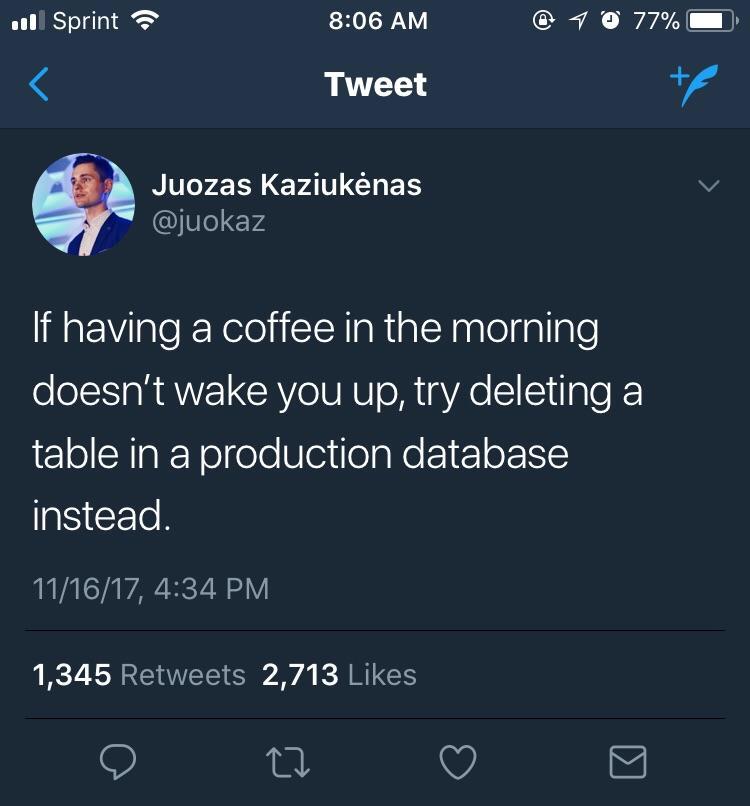Ranter
Join devRant
Do all the things like
++ or -- rants, post your own rants, comment on others' rants and build your customized dev avatar
Sign Up
Pipeless API

From the creators of devRant, Pipeless lets you power real-time personalized recommendations and activity feeds using a simple API
Learn More
Comments
-
 ddephor43518ySQLite, nothing to install, nothing to manage, acts like a database, but uses just files you can transfer to any other computer.
ddephor43518ySQLite, nothing to install, nothing to manage, acts like a database, but uses just files you can transfer to any other computer.
And you can change to a real database any time you want.
If you absolutely want a database, use MySQL, it's easy to install, but there is a bit of setup and management needed before you can get started. That can be a bit of a hassle if someone else has to have the same environment set up by his own. -
You can learn about sqlite from the official docs:
https://docs.python.org/2.7/... (Python2)
https://docs.python.org/3/library/... (Python3) -
 Anaeijon5128yEither use native sqlite or a look at Dataset:
Anaeijon5128yEither use native sqlite or a look at Dataset:
https://dataset.readthedocs.io/en/...
It is based on the universal SQLAlchemy Library but does most things for you automatically.
If you don't have a Database it even creates one for you.
And it connects to nearly every DBMS you would want to use.
Also dataset transforms the database into a nice object oriented structure to work with in your script.
If you need more functionality you can always run SQLAlchemy commands over Dataset.
For development, I would recommend sqlite-backend with dataset, because Dataset simply creates the sqlite-.db file for you.
Later you can switch to any other DBMS by changing a single line at the top of your sourcecode.
Related Rants

 Oh sh*t
Oh sh*t No questions asked
No questions asked As a Python user and the fucking unicode mess, this is sooooo mean!
As a Python user and the fucking unicode mess, this is sooooo mean!
#include <helpme>
Ok guys I kinda need your help. I have to write a python project for my school in 3 days and instead of saving everything in files I want to have a database. So my question is can you suggest the most simplest and easiest db to create and connect to Python for a few simple tables. Also the easiest to set up on another computer since my professor will probably want to try it at home.
Also I have to learn Python in 3 days, since I already know a couple of languages, I'm confident I can pull it off. Why I'm asking for help is I need to document it all, that will probably take a chunk out of these 3 days.
question
school project
python
need help
database